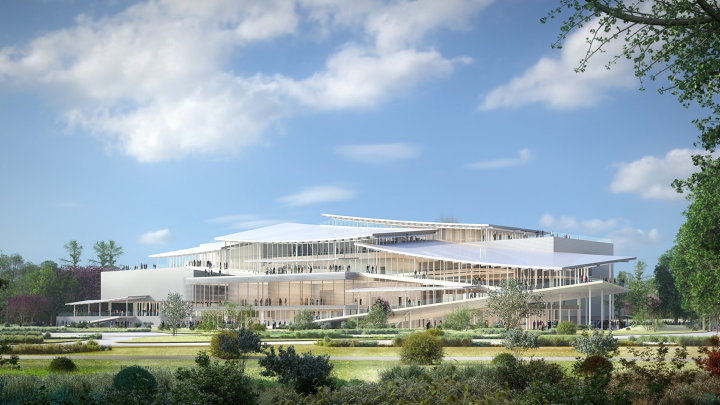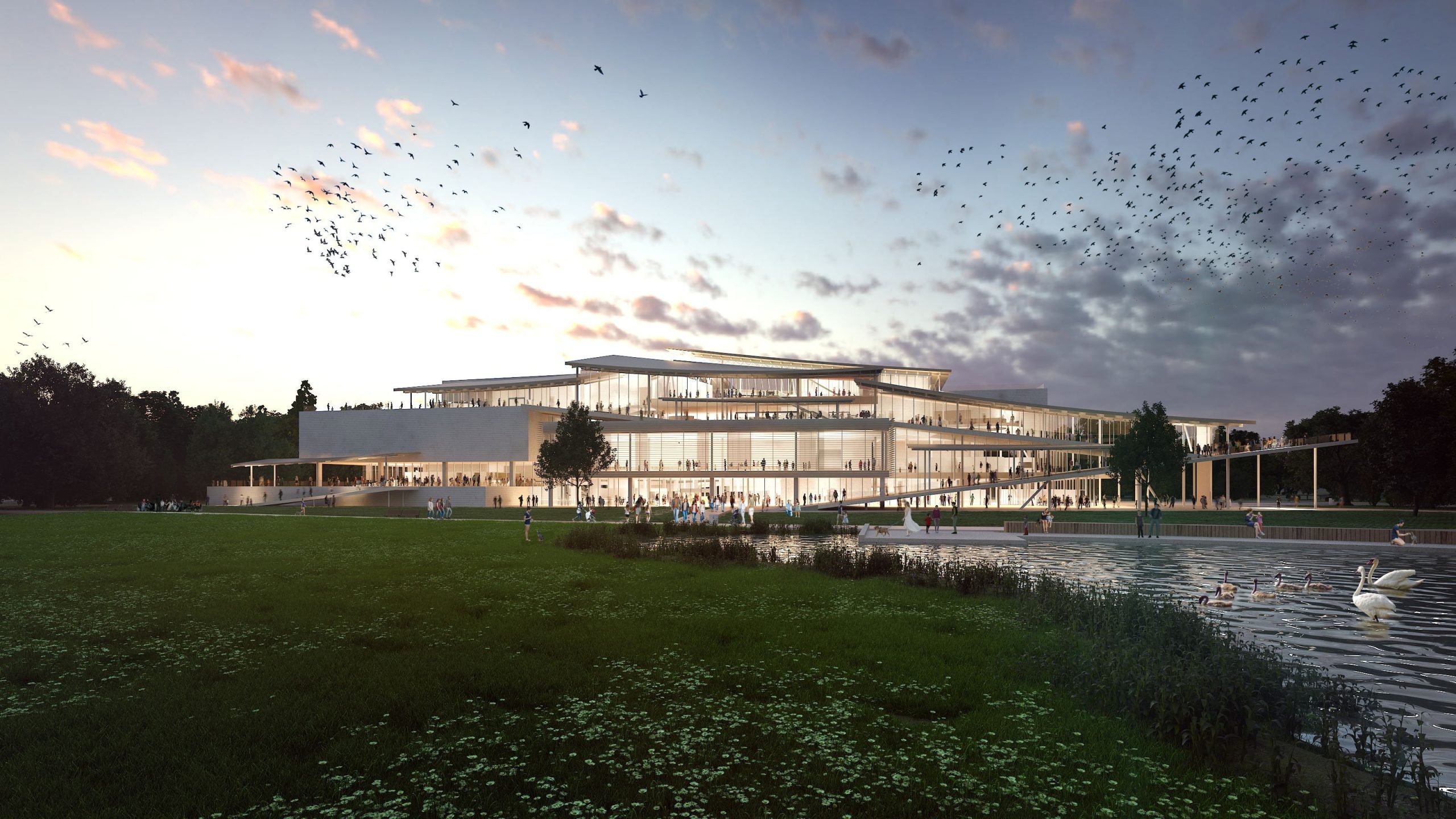
The new gallery will be the largest museum in Hungary that exhibits the modern development of European fine art of Hungarian and world art history from the 19th century.Continue reading

As part of the Liget Budapest project, the city green in the Hungarian capital is to be developed into a lively cultural center by 2023. In addition to the construction of the Ethnographic Museum, the Hungarian National Gallery, and the House of Hungarian Music, the green space is also being and has already been completely renovated in part. The history of the huge park in the capital goes far back to the 18th century when there was a bog and a pasture here. To avoid the danger of malaria, Queen Maria Theresa ordered the planting of trees. And if we jump forward in time about 150 years, we can see that today the area hosts wonderful cultural and natural activities and will soon become a real cultural and sports green center of the capital.
This article was originally published on our sister-site, Ungarn Heute.
On the territory of the Budapest City Park in today’s 14th district, there was still moor in the 18th century, planting began only at the beginning of the 19th century. In the coming decades, the importance of the park continued to grow, so that, among other things, a pond, the first spa in the city, and a carousel were built. The pond was used for boating in summer and ice skating in winter. It was equipped with lighting as early as 1878.
The peak of its history was reached in 1896 when the Budapest Millennium Exhibition was organized there on the occasion of the millennial anniversary of Hungary. In addition to the numerous exhibition pavilions, the Millennium electric subway (today’s M1 line), Vajdahunyad Castle, and the Art Hall were built then. During the Second World War, the park was significantly damaged by bombing, after which slow decay followed in the decades of socialism.
Before and after the political change, the area functioned for decades only as a huge park but without a careful owner. Finally, after several decades, the current government has decided to give more and also other tasks to the area, which was so far severely neglected. Accordingly, the goal of the Liget Project is to develop the urban park into the cultural center of both the capital and the country after decades of neglect. By 2023, as a result of the developments, a modern, greener, and the more lively park is to be created.
In 2018, the renovation of the Museum of Fine Arts, which was originally handed over in 1906 in the presence of King Franz Joseph, was completed. In August 2021 it was announced that the facade of the opposite Art Gallery will also be renewed.
In 2019, the renovated former Olof Palme House, one of the oldest and most imposing buildings of the City Park was handed over. The building opened its doors to visitors as the House of the Millennium. A rose garden of 1500 roots and a Zsolnay fountain were placed in front of the main entrance.
At the end of 2017, the construction of the iconic building of the Ethnographic Museum began. The collection will be housed in a 34,000 square meter modern building, which will meet the wishes of both professionals and visitors in every way. The museum, which is being built according to the plans of Napur Architect, won the world prize in this category in 2018 after winning the “Best Public Building in Europe” award. Right next to it, an underground parking garage with 800 parking spaces was built in December 2020, the inner walls of which were decorated with the paintings of famous Hungarian painters, and a green promenade was created on its surface. The museum will be completed in March 2022.
In September 2018, the construction work of the House of Hungarian Music began. The building was constructed according to the plans of the Japanese Sou Fujimoto, who has been elected the most innovative architect in the world. The exhibition halls are located in the basement, as they do not require daylight. The concert halls are located on the park level, and the premises for teaching and research will be on the upper floor. The two concert halls and the Magic Hall are complete too. The house was already handed over and will open in January 2022.
The realization of three other buildings, the New National Gallery, the House of Hungarian Innovation, and the City Theater are still on schedule.
Not only buildings are being erected, but also the entire green area of the park is being, or partly has already been, renewed: Within the framework of the project, so far, a green area of about 150 thousand square meters has been renewed, 72 thousand square meters of paved areas have been broken up, as well as almost five hundred deciduous trees, 140 thousand perennial plants and more than 70 thousand shrubs have been planted. The botanical garden has also been modernized, as well as the dog adventure park, and the large playground have been created. In addition, sports fields for young people have been built.
Sources: LigetBudapest.hu, netveleg.hu, Magyar Hírlap
Featured image: The new building of the National Gallery, published by the Liget Budapest Project on October 9, 2021. Photo by Liget Budapest Project/MTI